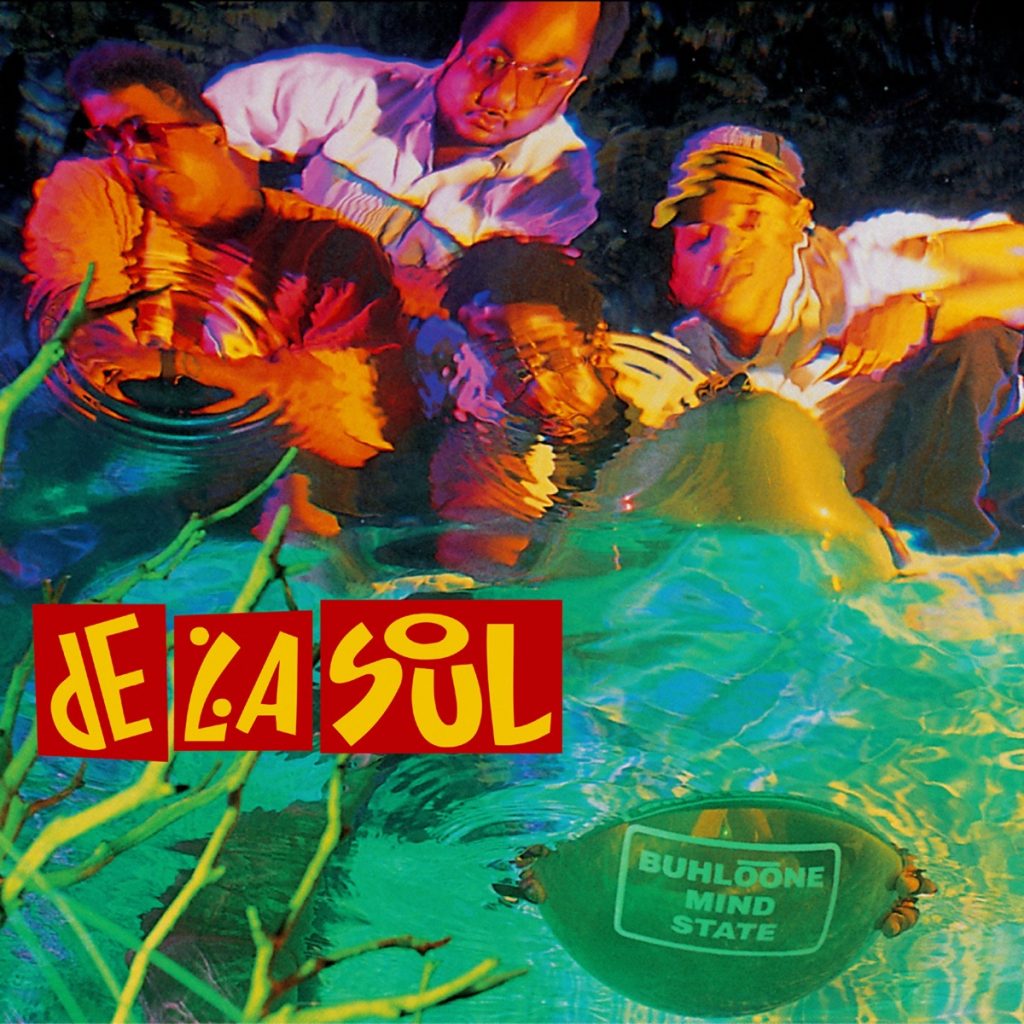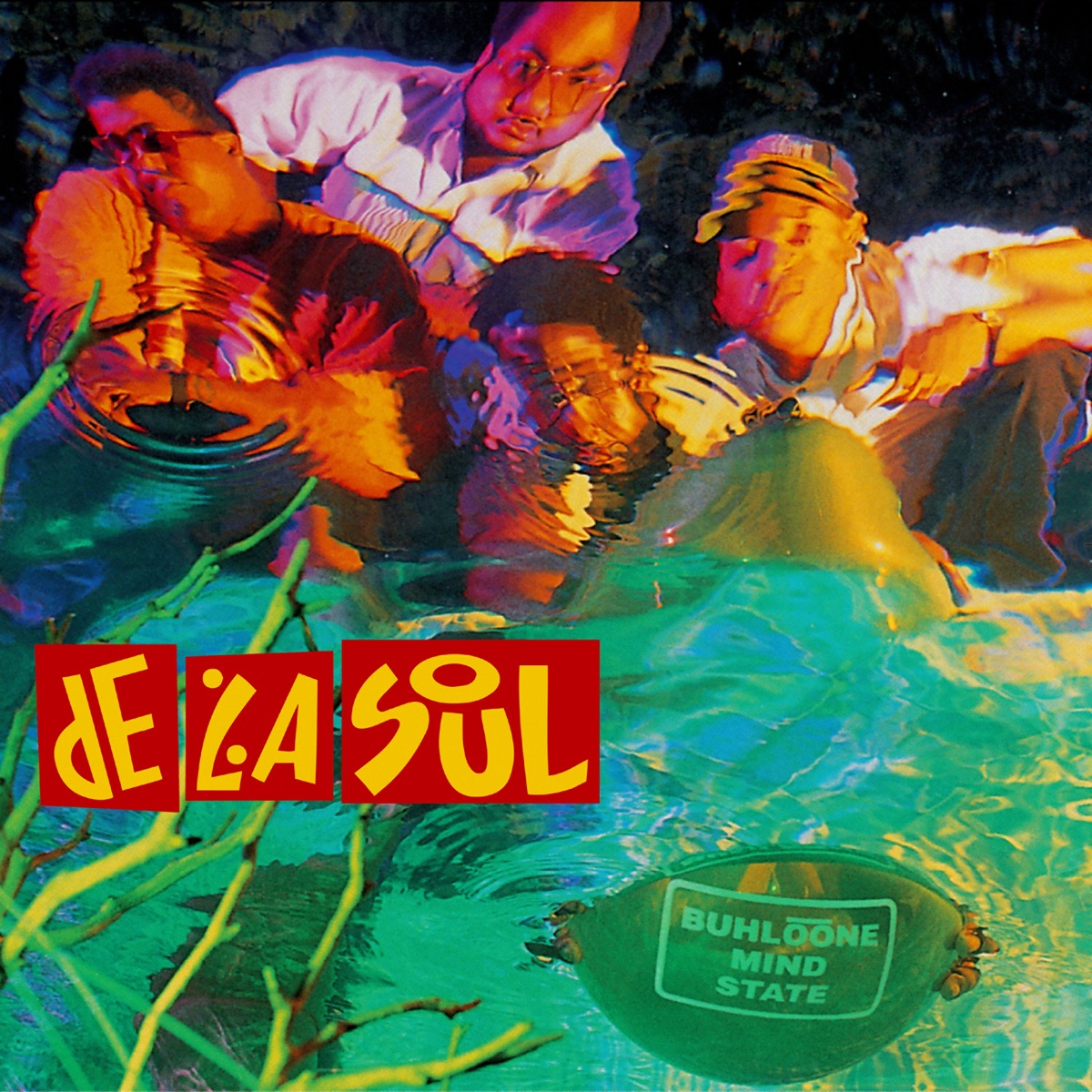Each week, we take a look at some obscure or overlooked entries in the catalogs of music’s big names. MAGNET’s Bryan Bierman focuses on an album that, for whatever reason, slipped through the cracks in favor of its more popular siblings. Whether it’s new to you or just needs a revisit, we’ll highlight the Hidden Gems that reveal the bigger picture of our favorite artists.

There’s a mantra that appears throughout De La Soul’s Buhloone Mindstate: “It might blow up, but it won’t go pop.” Like many of the trio’s best lyrics, there are a number of ways to interpret this. At its simplest, the line echoes the album’s title; digging deeper, the threesome could be promising that no matter their amount of success, they won’t “go pop” or change their sound for anyone, especially the mainstream. On a more personal level, one could read this as a statement of defiance, telling the world that De La will never break up, in spite of whatever comes its way. There’s no one answer, in fact; there’s probably truth in each of these readings and maybe even more—but as the album warns, there’s always a “stickabush” threatening to deflate you.
By the time of the album’s release in 1993, Posdnuos, Maseo and Trugoy had already had a wild and successful career. Barely out of high school, the Long Island, N.Y., trio hooked up with producer Prince Paul to help record its first album, 3 Feet High And Rising. Released in ’89, the group’s colorful beats, along with the smart and often humorous wordplay, struck a chord with listeners searching for an alternative to the up-and-coming gangsta-rap phenomenon. Exploding to success with hit single “Me, Myself & I,” De La Soul was hailed as an innovator by the music press, and the hopeful positivity of the trio’s so-called “D.A.I.S.Y. Age” (short for “Da Inner Sound, Y’all”) was seemingly in full effect. However, after feeling dissed by a large portion of the hip-hop community, as well as the music press and media, which constantly referred to the group as “hippies,” much to its dismay, De La Soul made one of the boldest moves in rap history by proclaiming its death.
Released two years later, De La Soul Is Dead defied everyone’s expectations by giving nobody what they thought they wanted. With a cover depicting a subtextual broken pot of daisies, it was clear that this was a different side of the group; fans of 3 Feet High were surprised by the follow-up’s sometimes stark nature, and the group’s critics were jarred to hear the alleged “hip-hop hippies” confront them on wax. Though there are still upbeat moments that highlight the group’s unshakable integrity and playfulness (“Ring Ring Ring,” “A Roller Skating Jam Named ‘Saturdays’”), they were lodged next to much darker fare like “Millie Pulled A Pistol On Santa,” a disturbing tale of a teenage girl who murders her father, a department store Santa Claus, who had sexually molested her. Regardless of its heady content, the album sold well, though not reaching 3 Feet High And Rising levels. De La Soul Is Dead is not only widely considered the group’s high point, but it’s now regarded as one of the greatest hip-hop albums of all time.
De La refused to be pigeonholed; by “dying,” the band proved that it was more than an image. They illuminated everyone, even some of their fans, forcing on them the realization that it didn’t matter what they were, but who they were. So who were they? Or rather, who were they now? On their third album, they would rise again, but what would this “rebirth” be like? Though still young, Tru, Pos and Mase weren’t teenagers anymore—they were growing as people, as well as artists. As co-producer Paul described in a 2008 interview with The Smoking Section, “They were maturing … The vibe had changed. Things had happened since 3 Feet High And Rising. People had kids and responsibilities got heavy. The pressure of trying to follow the success of the first album and all of the criticisms made it kind of deep. Buhloone Mindsate caused us to mature somewhat. For them, I think the difference was that I was still in yuck yuck land. I wanted to do the goofy, crazy stuff. They were into being a little tamer. I didn’t know that it would be my last album with them, but I knew things were definitely changing.”
Hip hop, in all its forms, was changing too. By 1993, the gangsta rap and G-funk sounds were becoming more widespread. Lyrically, more and more MCs focused exclusively on darker themes of urban violence and drug dealing. The rise of Biggie, Wu-Tang and Tupac was right around the corner, as was the all-encompassing East Coast/West Coast feud. The popularity of Afrocentric, jazz-sampling, “conscious” or “alternative” hip hop, which had once taken hold of the mainstream, was beginning to dwindle. At the forefront of this movement was the Native Tongues posse, a collective of friends and like-minded artists that included De La Soul, Jungle Brothers, A Tribe Called Quest, Black Sheep, Queen Latifah, among many others. But even as the trend started to fade, there was turmoil among the Native Tongues themselves. Financial success and creative differences caused a rift among the collective, something De La Soul would discuss on Buhloone Mindstate.
Besides a few problems with sample clearing (which was fast becoming a necessary obstacle in hip hop), the actual making of the record was enjoyable. In an interview with A.V. Club in 2000, Posdnuos recalled, “Buhloone Mindstate was an album we made when we were comfortable with where we were as De La Soul, knowing that even though a lot of groups around us were doing things they didn’t want to do, we felt confident knowing we weren’t going to change for anyone. That was a really peaceful period in our career, with De La Soul Is Dead having expressed a lot of different things that we had seen and gotten weary of from the 3 Feet High And Rising standpoint. I think Buhloone Mindstate showed that we had come to terms with them. It was just a really relaxed album, a really mellow album, and that’s where we were.”
Though there is an undeniably mellow nature to the record, it sometimes runs parallel with more experimental sounds. Like a majority of rap artists, De La sampled the work of James Brown, especially his legendary horn section, the JB’s. Although his records were made decades prior, the smooth horn stabs and the staccato drum beats of Brown’s music became the blueprint for hip-hop music itself. The core of the JB’s—Maceo Parker, Fred Wesley and Pee Wee Ellis—all appear on Buhloone Mindstate, not only as reminders of hip hop’s past, but to break new ground for its future. On “I Be Blowin’,” Parker “blows the soul out” of his saxophone over a jazzy Lou Rawls sample. Mixing live musicians with hip hop wasn’t a new idea, but for the group to feature a five-minute instrumental at the heart of the album was an adventurous feat. A second version entitled “I Am I Be” appears later on the LP; the gorgeous horns now mesh with Pos and Trugoy’s introspective lyrics, making for one of the record’s strongest moments.
Not only is De La Soul sonically more mature, the group’s rhymes push its riddled wordplay and personal sentiments even farther than before. Though the trio let off a bunch of steam on De La Soul Is Dead, there’s still some anger toward the music business and its critics to vent. On “In The Woods,” Pos lays down one of the best verses of his career, giving his take on the Tongues’ rift (“Yo, that Native shit is dead, so the stickabush is coming”), as well as reiterating his unwillingness to imitate De La’s contemporaries (“Catch me breathin’ on planes where the gangstas outdated/Fuck being hard/Posdnuos is complicated”).
Though it’s not all anger that De La delivers on Mindstate. Their ability to poke fun at themselves has always been one of their most charming aspects. On “En Focus,” Dres from Black Sheep is at a club attempting to hit on Shortie No Mass, a female rapper who is only interested in Posdnuos. After Pos raps about their diminishing sales and the public’s fickle obsessions (“the album faded to black, that’s when the amnesia starts”), Shortie changes her tune, and is now infatuated with Dres. After Dres explains he’s at the club “with my man Pos,” she’s clearly forgotten all about him, mistaking “Pos” for Positive K of “I Got A Man” fame. The refrained warning of a “stickabush” is then repeated, which threatens to pop their balloon yet again.
Like its previous work, De La Soul continued to create some of the most fun music in rap history on Buhloone Mindsate. From back-to-basics goofiness with Biz Markie (“Stone Age”) to appearances by Japanese hip-hop group Scha Dara Parr and Takagi Kan, who only rap in their native language (“Long Island Wildin’”), the group’s jovial atmosphere made its records so entertaining. Built on a sample of Michael Jackson’s “I Can’t Help It,” the stellar single “Breakadawn” references everything from Star Trek and R.E.M. to Cheer laundry detergent, while still serving as an astute reminder of De La’s greatness.
Listening to it now, Buhloone Mindstate can be seen as a sendoff to De La Soul’s early days, both personally and professionally. It’s a grownup record that pushes forward, while highlighting the trio’s incredible past work with Prince Paul (who, unbeknownst at the time, would not return). Upon release, the reception was lukewarm, though perhaps that’s to be expected; the beats might not jell at first, with rhymes you have yet to comprehend. However, it’s since earned its legacy as one of the group’s best and most underrated albums. This is a work that stays with you, revealing its intricacies over time. In other words, it’s a De La Soul record.







